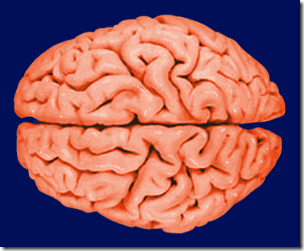Neuroplasticity: Your Brain’s Amazing Ability to Form New Habits
with 90 comments
 One of the most popular areas of research in psychology these days is neuroplasticity. Neuroplasticity refers to the brain’s ability to restructure itself after training or practice. In many ways, neuroplasticity is what makes personal growth and development possible at its most basic level. With the understanding that change is indeed possible, you’re able to focus on the ways in which you’d like to grow instead of whether or not it’s achievable for you. It’s possible, it’s proven, and now it’s up to you!
One of the most popular areas of research in psychology these days is neuroplasticity. Neuroplasticity refers to the brain’s ability to restructure itself after training or practice. In many ways, neuroplasticity is what makes personal growth and development possible at its most basic level. With the understanding that change is indeed possible, you’re able to focus on the ways in which you’d like to grow instead of whether or not it’s achievable for you. It’s possible, it’s proven, and now it’s up to you!
We are what we repeatedly do. Excellence, then, is not an act, but a habit. – Aristotle
An example of how neuroplasticity works: when you view the brains of people who frequently practice playing the violin under fMRI (functional MRI) they appear to have developed a larger area of their brain devoted to mapping their fingers. This change is directly related to the quantity and the quality of the practice they’re performing – their brains are adapting in very real and tangible ways unbeknownst to them.
One of the fun sayings around neuroplasticity: “neurons that fire together wire together… and neurons that fire apart wire apart.”. Effectively this means that when neurons activate at the same time as a response to an event, the neurons become associated with one another and the connections become stronger. This is why people talk about “neural pathways being set” with respect to increased practice – the more practice you accumulate, the more ingrained or grooved the pathways become. Of course the inverse happens as well: if those pathways aren’t utilized, the space will be used by other pathways needing room to grow. Use it or lose it!
 You can picture this yourself by imagining the flow of water through sand (I’m writing this from a beach in Kauai so excuse the metaphor – but I always find a mental motion picture is worth a thousand words!) When seawater first runs over the sand, there isn’t a path for it to follow so it starts to form one for itself. As the water continues to flow over the sand, the pathway forms a real groove in the sand and gets deeper and more defined. It may start to branch off and take up more room in the sand if necessary, even reforming pathways on top of pathways that are no longer in use if it needs to. Once the pathways are formed, it becomes more difficult to change the water flow – and if the water ever stops flowing, the pathway will remain for some time in the hopes that it’ll be used again at some point. (This is why picking something back up after some time of inactivity is easier than starting a new activity cold).
You can picture this yourself by imagining the flow of water through sand (I’m writing this from a beach in Kauai so excuse the metaphor – but I always find a mental motion picture is worth a thousand words!) When seawater first runs over the sand, there isn’t a path for it to follow so it starts to form one for itself. As the water continues to flow over the sand, the pathway forms a real groove in the sand and gets deeper and more defined. It may start to branch off and take up more room in the sand if necessary, even reforming pathways on top of pathways that are no longer in use if it needs to. Once the pathways are formed, it becomes more difficult to change the water flow – and if the water ever stops flowing, the pathway will remain for some time in the hopes that it’ll be used again at some point. (This is why picking something back up after some time of inactivity is easier than starting a new activity cold).
The research around neuroplasticity is burgeoning these days – many people in psychology are talking about the hows and whys around it, and over the last decade a fair amount of research has already been done on the brain and its ability to reshape itself. It’s no longer considered a theory in brain science, it’s fact. Up until the 1980s or early 1990s, most scientists believed that your brain developed in your early years (throughout childhood) and then became “hardened” like dried concrete. One has to assume this is where the moniker, “you can’t teach an old dog new tricks” came from. But it turns out this just isn’t true. You can fundamentally change your brain so long as oxygen and blood is flowing through you. Which means you have no excuse when it comes to forming new habits.
In Tibetan Buddhism, the concept of neuralplasticity has been around for far longer than Western science has recognized it – the term for it is le-su-rung-wa which means “pliability”; your brain can change based on repeated experience. It’s no surprise then that studies have been performed on plasticity during meditation and have shown that the brain can change based purely on mental training. This of course has huge ramifications for mental practice and its impact on overall well-being. If you can think yourself into being more compassionate, or more positive and more resourceful, or calmer and more content, it seems a little too good to be true. But with some effort, it’s possible.
There are a few interesting things to note about neuroplasticity. Change takes place rather suddenly in the brain. A recent study has shown that habits can be formed in as little as 7 days of repeated activity, but can dissipate just as easily. In other words, change comes naturally and quickly and can disappear just as quickly as it arrived. It also appears that “learning a variety of new things, rather than simply practicing old skills, may be most effective in terms of brain structure alterations”. And while neuroplasticity is possible in adults, it appears that in children it’s rampant – which makes logical sense as it aligns with our overall perspective on learning.
In short: this is relevant research to all of us. It implies that people of any age have the ability to learn new things and form new habits. Therefore contentment (my preferred term for ‘happiness’) isn’t a state you’re born into, it’s a state you can discover. And the sky’s the limit for the ability to learn and perfect new things throughout your life.
So what are you waiting for? 🙂



